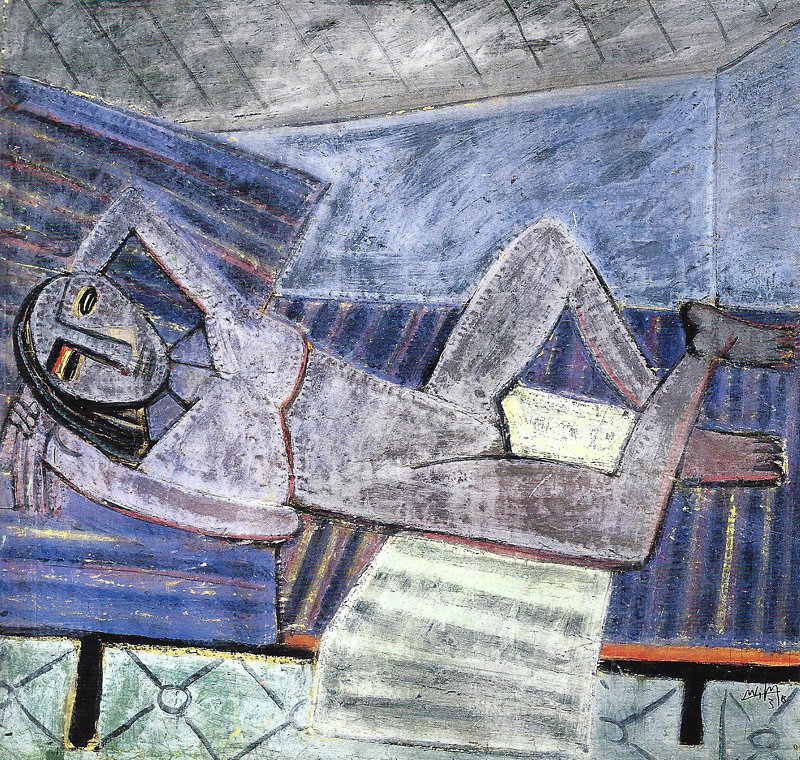
Wilfredo Lam (6) |
 |
|---|
Source: WTL digitized@ images from Wilfredo Lam; Imagining New Worlds. Ed. Elizabeth T. Goizueta. Boston: McMullen Museum of Art, Boston College, 2014, 93-94. Again, a photo of Wilfredo Lam with Pablo Picasso in 1954:
The painting above clearly shows Lam's affinity with those artists. Most especially we see the influence of Picasso's later Cubist work featuring stylized figures. In addition, however, Lam shows in this work an emotional/artistic return to his own strong Afro-Cuban culture and identity. Lam was from Sagua La Grande, a Cuban village with a dominant Afro-Cuban and Chinese-Cuban culture. Lam's grandmother, Matónica Wilson, was a curandera and a priestess of the Santería religion that blended elements of Catholicism and the African Yoruba religion. (Side note: Matónica Wilson figures in Maitreya (1978), the major novel by the Cuban writer Severo Sarduy.) |
|---|